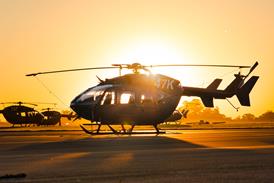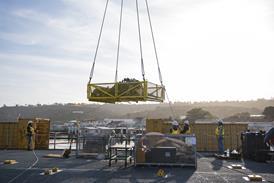It should come as no surprise that in the USA, much of what can or cannot be done about capacity growth will boil down to politics.
In keeping with all of American life, politics weaves its way through all of the major issues: not least the struggle to raise airport user fees to help fund new expansion. More than ever, the ability of US airport managers to meet their capacity increase forecasts may depend as much on their lobbying powers as their planning skills.
The issue of increasing capacity is being felt as keenly by the smaller regional airports as by the major hubs. Small and medium-sized towns across the USA fear that consolidation at the major hubs will leave them off the map. With almost no national train transportation system, the lack of an airport can sound the death knell to hometown aspirations for industrial growth. And with the boom in regional jets sweeping the country, many small airports are drafting plans for runway extensions that will allow them to stay in touch, but many will also need to examine their terminal facilities. Most regional carriers are keen to provide passengers with covered gateways and jetways in order to keep service levels in line with those of the major network carriers onto which their customers connect.
The major hubs, meanwhile, are similarly pushing forward plans to increase capacity so they can cope with the forecast growth in passenger and cargo demand. In some areas of the USA, that growth curve is steep. Along the east coast, for example, growth predictions are startling. Philadelphia became the nation's fastest growing passenger airport last year with growth of more than 16%. By 2002, work should be complete on a new international and a new commuter terminal as well as the expansion of two further concourses. That should allow Philadelphia to add another 13 million passengers and double its cargo capacity.
At Atlanta Hartsfield, which edged ahead as the world's busiest airport in the first half of this year, managers are waiting for approval of their latest master plan. If accepted, that would raise capacity by 28% to a massive 92 million passengers. At Dallas-Fort Worth, a 20-year expansion plan, aims higher still, with passenger capacity slated to grow by 57% to 110 million passengers by 2015.Over the Canadian boarder, Vancouver is also backing up its gateway ambitions with a programme which would allow it to handle 43 million passengers by 2007 - representing growth of over 50%.
And yet this relish for capacity growth seems at first glance to contradict the long term forecasts assembled by the Airport Council International (ACI) from its members. That suggests that passenger demand in North America will be among the world's lowest at under 3% a year between now and 2010. And such growth as there is will come from international traffic, rising almost twice as fast as for domestic at 4.6%.
The answer to this apparent anomaly depends, to a certain extent, on where you look. While the American market is the largest and most mature in the world, and capacity growth forecasts reflect that maturity, there are some pockets where full growth potential remains untapped. Philadelphia is one such example, with analysts pointing to this city as having some of the best hub growth prospects along with Houston and Los Angeles. New York Newark is also on the list, but faces operational constraints in terms of runway, airspace facilities and gates. The latter remains a key barrier to airlines growth at many of the key US hubs, including Atlanta, Chicago O'Hare and Las Vegas.
So the call for expanded facilities across North America makes more sense for some than others. But the highly competitive nature of these airports, combined with pressure from local community politicians who know their town's prosperity is tied to having a viable airport, is making everyone anxious to find funds for expansion.
The Federal Aviation Administration, under severe financial constraints of its own, does not give high priority to grants for growth alone. Its priorities are safety, maintenance of safety standards, and finding a solution to the problem of airspace congestion. So American airport managers must look elsewhere for expansion funds as they campaign fiercely for an increase in the passenger facility charge (PFC) that is added to the ticket price.
Ideally, the ACI would like to raise $10 billion a year over the next five years for airport capital improvement programmes and a $1 increase in the PFC would go some way towards achieving this goal. Politicians, however, are reluctant to support what is essentially a tax hike.
North American airports are finally beginning to follow their European and Asian counterparts, in waking up to the potential of developing new retailing revenue streams to help fund growth. The enlightenment is still patchy but with alternative funding in short supply, others are under pressure to catch up. No-one in North America wants to be last in the capacity race.
Source: Airline Business























